You’ve been driving around for hours, your whole body aching from the constant jarring and bumping. The heat is intense, the sun beats down on you unmercifully, easily finding its way through the open vehicle. Every bush, every tree, every leaf is starting to look the same, a blur. Suddenly, something catches your eye, something is out of place. What have you spotted?
Coming round the corner, lying under the shade of a tree is a whole pack of African hunting dogs, one of the rarest predators on the continent. With their beautiful patterned coat its easy to see why they’re also known as painted dogs. They sit, tongues out, lounging in the shade, relaxed, at ease, barely registering your presence. You watch, amazed, not believing how lucky you are- this is such a rare sight, and, at the rate things are going, one not many others may ever get to see.
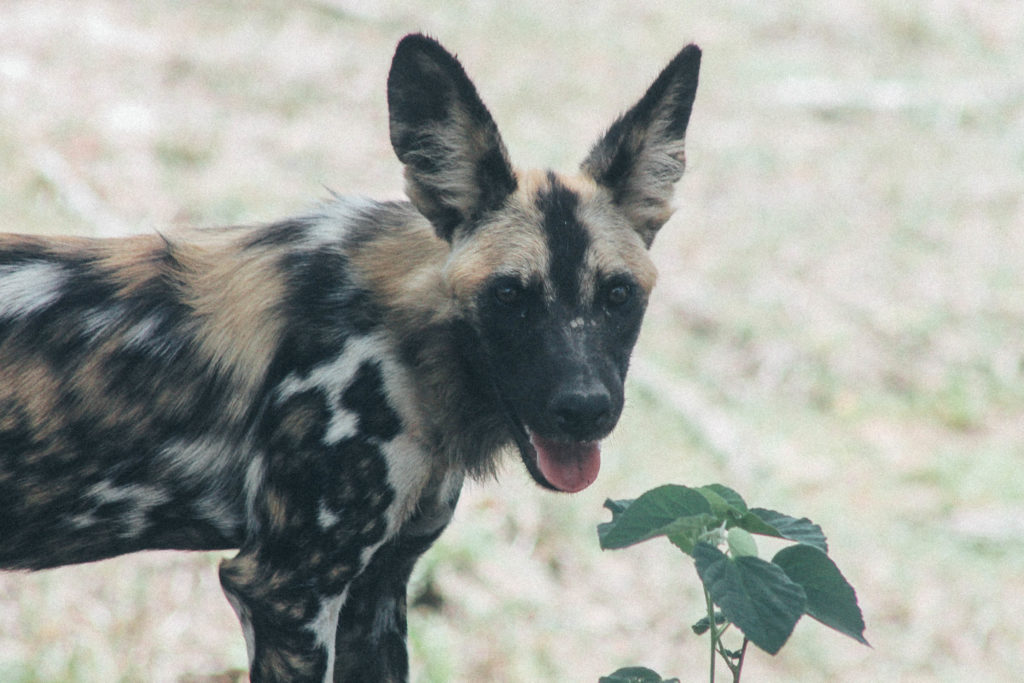 Seeing African hunting dogs for the first time on safari in the Selous in Tanzania was one of my most amazing travel experiences. We were incredibly lucky, but it wasn’t the last time we got to see those magnificent predators in the wild. Three years later, in Zimbabwe, we spotted huge packs of the dogs in Gonarezhou National Park.
Seeing African hunting dogs for the first time on safari in the Selous in Tanzania was one of my most amazing travel experiences. We were incredibly lucky, but it wasn’t the last time we got to see those magnificent predators in the wild. Three years later, in Zimbabwe, we spotted huge packs of the dogs in Gonarezhou National Park.
Although not everyone will get to see hunting dogs on safari, chances are you’ll encounter other animals in their natural habitat, which is hard to beat. Its not surprising that an African safari is high up on most people’s wish list, and I’m lucky to have had two amazing safari experiences. That’s not to say that they are easy, oh no. Africa is not for the faint-hearted and safaris can be challenging. They are so worth it though. I’ve written about my experience in Zimbabwe already, but I though I’d share my tips about how best to survive (and get the most out of) a safari, drawing on my experiences in Tanzania a few years ago, since I haven’t written about that.
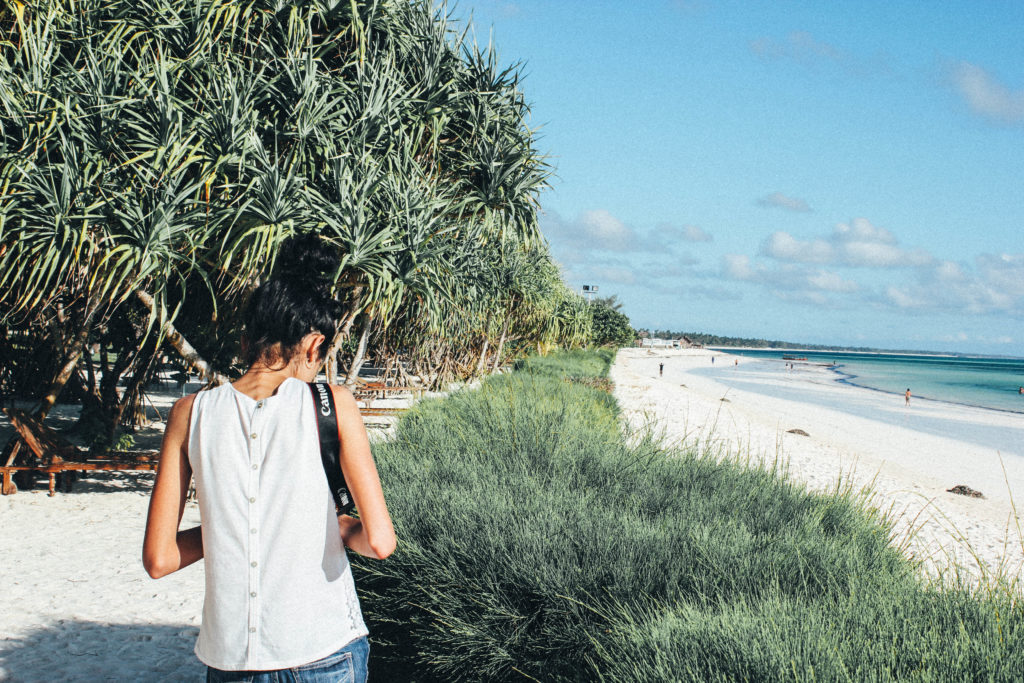 Point 1- Chose a good camp
Point 1- Chose a good camp
This is of vital importance as it will affect the whole experience, from the food you eat, to the guides. In Tanzania we first stayed in Stanley’s Kopje in Mikumi. It had an epic view of the park since it was atop a hill and the tents were pure Out of Africa- all cream and dark wood, but right there in the bush. You could hear animals all night, which was pretty exciting (mum claimed to have heard lions). But other than that, the food was rubbish, and the location meant you spent ages just getting into the main areas of the park.
The next place we stayed was in the Selous– Selous Riverside Safari Camp. Again, it was located a good deal away from the actual park, which wasted time. The guide we got saddled with was not exactly great and the tents got incredibly hot at night. The pool got a thumbs-up though- it was the place to be as the sun set low over the river.
We did learn from our mistakes- three years later in Zimbabwe, Chilo Gorge was an amazing place to stay.
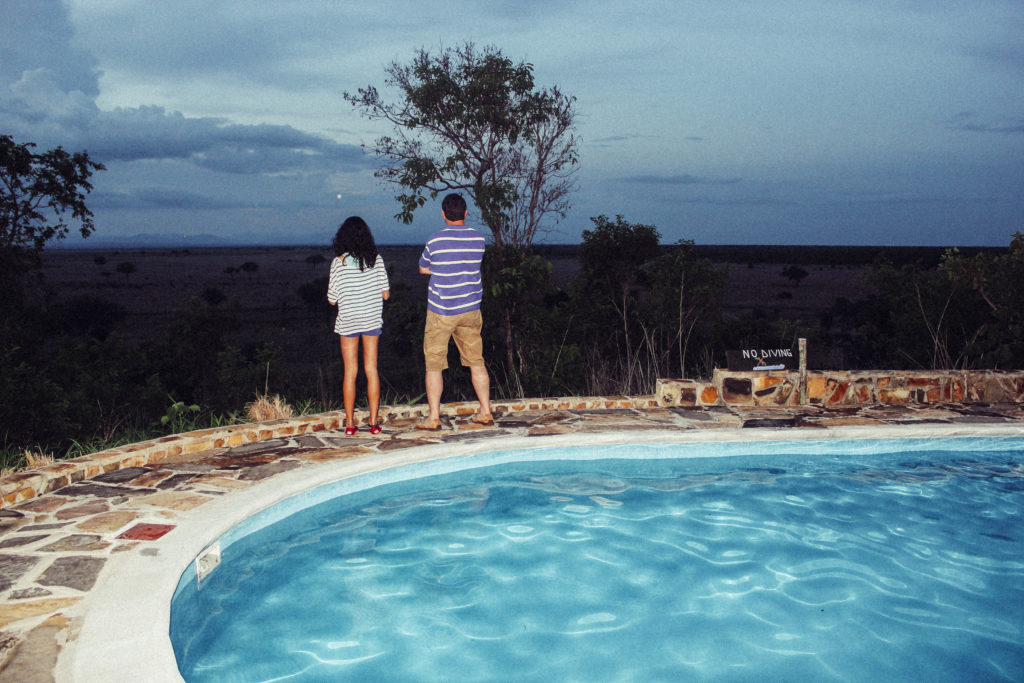
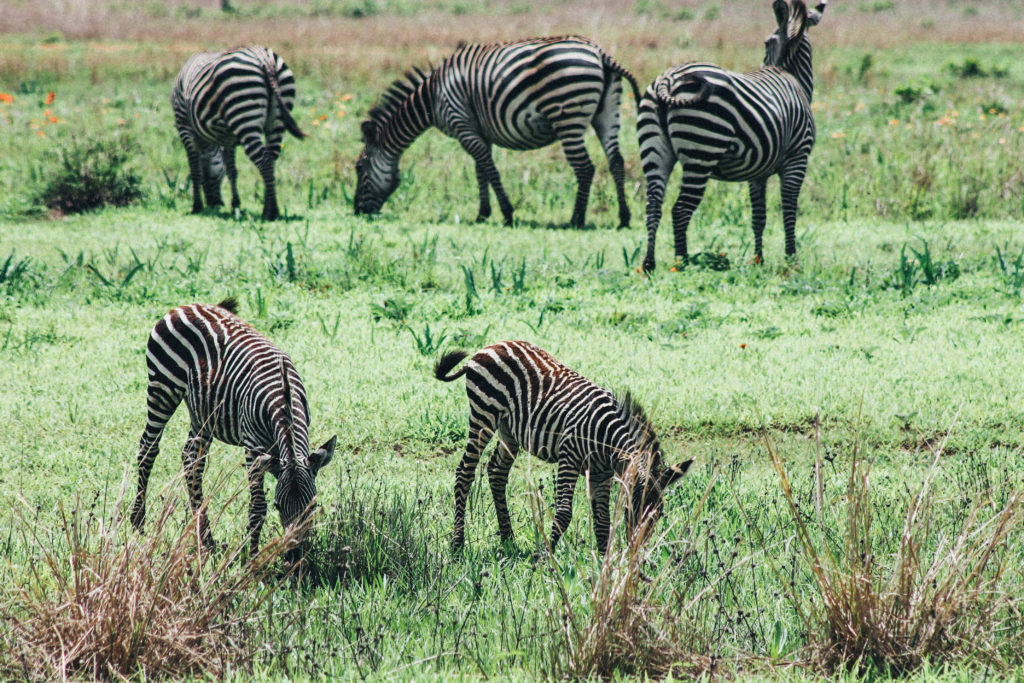 Point 2- Try not to get stuck
Point 2- Try not to get stuck
We managed to do this. In Mikumi, our Landrover got itself stuck in the mud and we had to be rescued, no joke. I’m not sure why we were driving through such a muddy area after recent rain (ask our guide) but the Landrover sure didn’t like it. We spent most of the afternoon trying different ways to get it unstuck as dusk slowly crept up and our imaginations started to go into overdrive. I found it all exciting at the time, standing around in the bush, but looking back it could have been dicey. Some guides from another camp picked us up in the end, and we drove back to camp through the dark. Moral of the story- don’t trust your guide or Landrovers.
You’d think we’d learned our lesson but we managed to pick a boat with a faulty motor (and guide) for our river safari in the Selous. Yes, somehow our boat opted to stop in the middle of the hippo and croc infested Rufiji river.
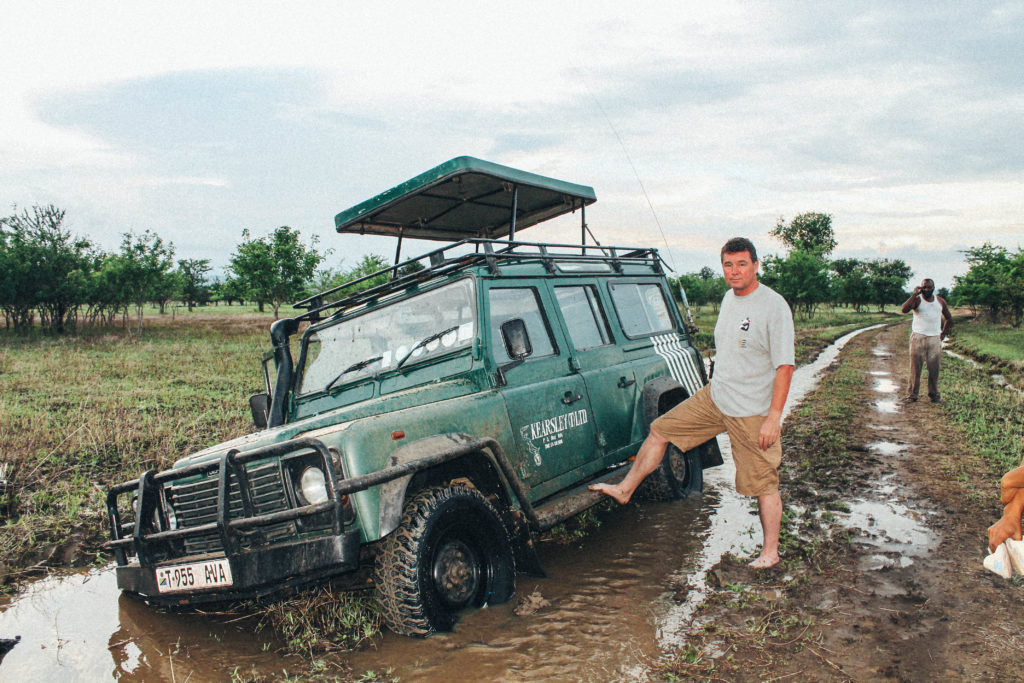 FYI, our choices of vehicles and guides improved three years later. Practice makes perfect.
FYI, our choices of vehicles and guides improved three years later. Practice makes perfect.
Point 3- Be patient and observant
I want to emphasise my points about guides- don’t trust them. That’s not to say they are all useless, but many know as much as I do about the bush. Don’t rely on them to spot animals for you. Its funner to do it yourself; Maya was the ultimate pro at this and spotted lions and the hunting dogs before our guide. It takes time though, so its important to keep looking and to be patient. Seeing animals in the wild, whether its a pride of lions, a family of elephants playing in the mud or an elegant giraffe, are some of my most favourite travel moments.
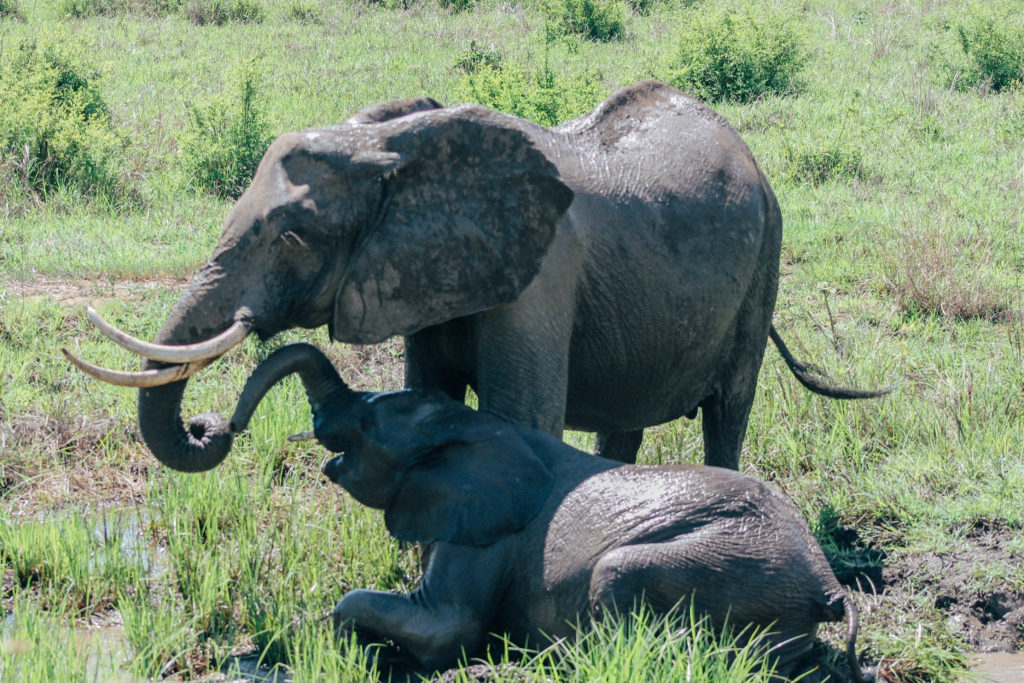
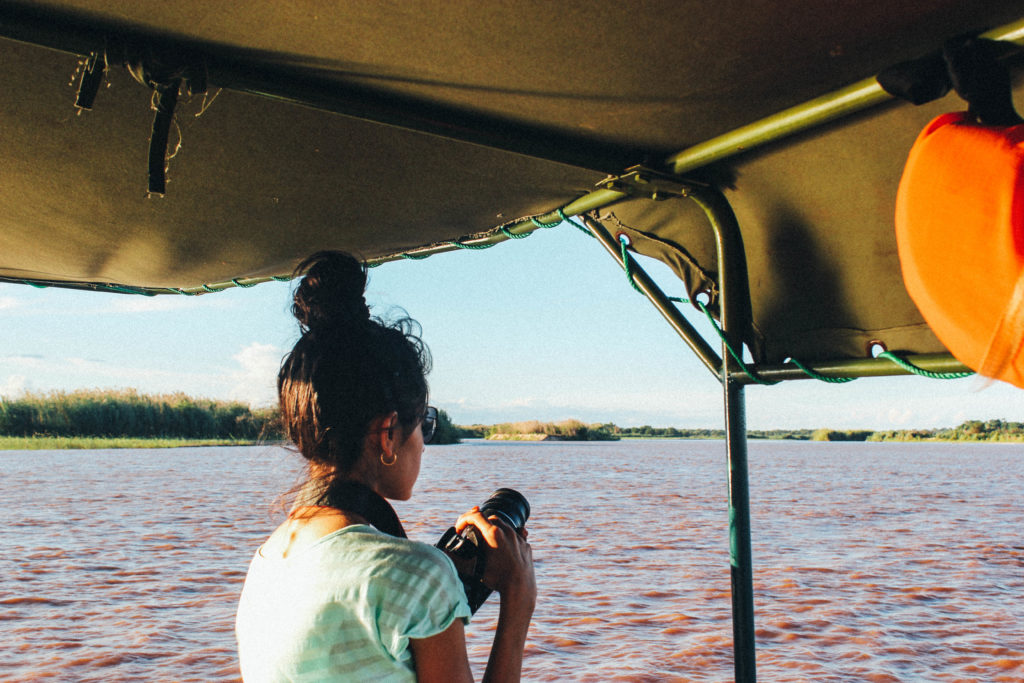
Point 4- Walking safaris aren’t all they’re cracked up to be
I was really excited about my first walking safari. Being out in the bush, without the protection of a jeep, the guide carrying a rifle, the chance of coming face-to-face with a lion or elephant. In reality, our bush walk in the Selous could have been mistaken for a Sunday afternoon wander in Britain Shopping Centre. Our guide strolled along chatting with the ranger, and pointed out trees, leaves and a whole lot of different droppings. By luck (and not the guide’s expertise), we came upon a giraffe family standing silently under acacia trees, and we just stood and watched them watching us, which was pretty special.
Our bush walks in Zimbabwe were much more professional, and although we didn’t see anything big there was the sense of raw adventure and excitement that was lacking in the Selous and we did learn a lot about the ecosystem of the bush.
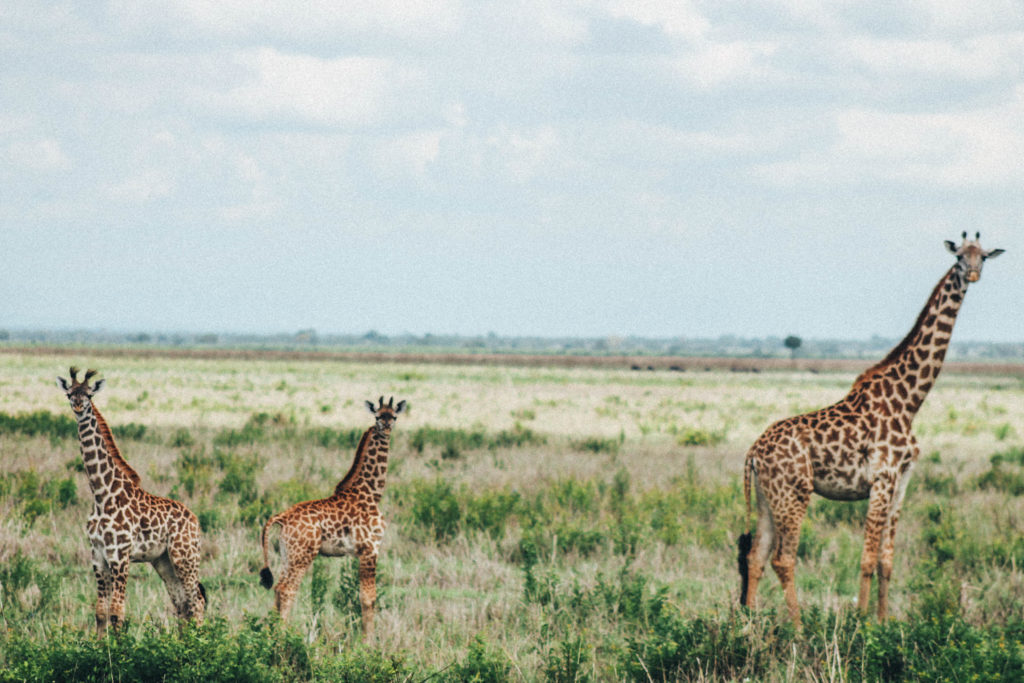
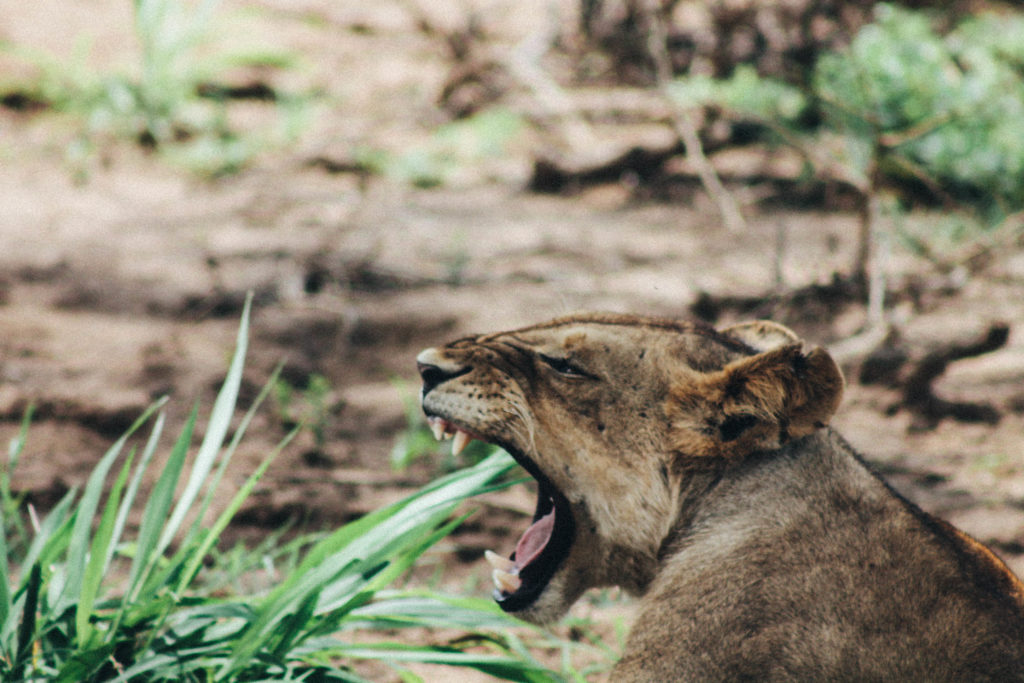 Point 5- Giraffes are great
Point 5- Giraffes are great
I make this point not only because I do think giraffes are great; they are such graceful creatures, but also because its important not to get too fixated on ticking off a list of ‘must see’ animals. We were lucky to see lions, elephants, wild dogs, zebra, giraffe, hippos, crocodiles, wildebeest and lots of antelope, birds, and warthogs on our Tanzanian safari, but I wasn’t too disappointed that we didn’t see leopards, hyenas etc because what we did see was amazing in itself. Either way, animals are full of surprises, good and bad. Like the elephant mum who took offence at our lingering presence in Mikumi and made her annoyance known by charging after our Landrover. In the Selous, we had stopped for a picnic lunch outside by the river when in the distance a whole herd of elephants started approaching. Just when we thought we’d have to get back in the jeep they altered course slightly, still passing close by but just accepting and ignoring us. Needless to say those were an unforgettable few moments.
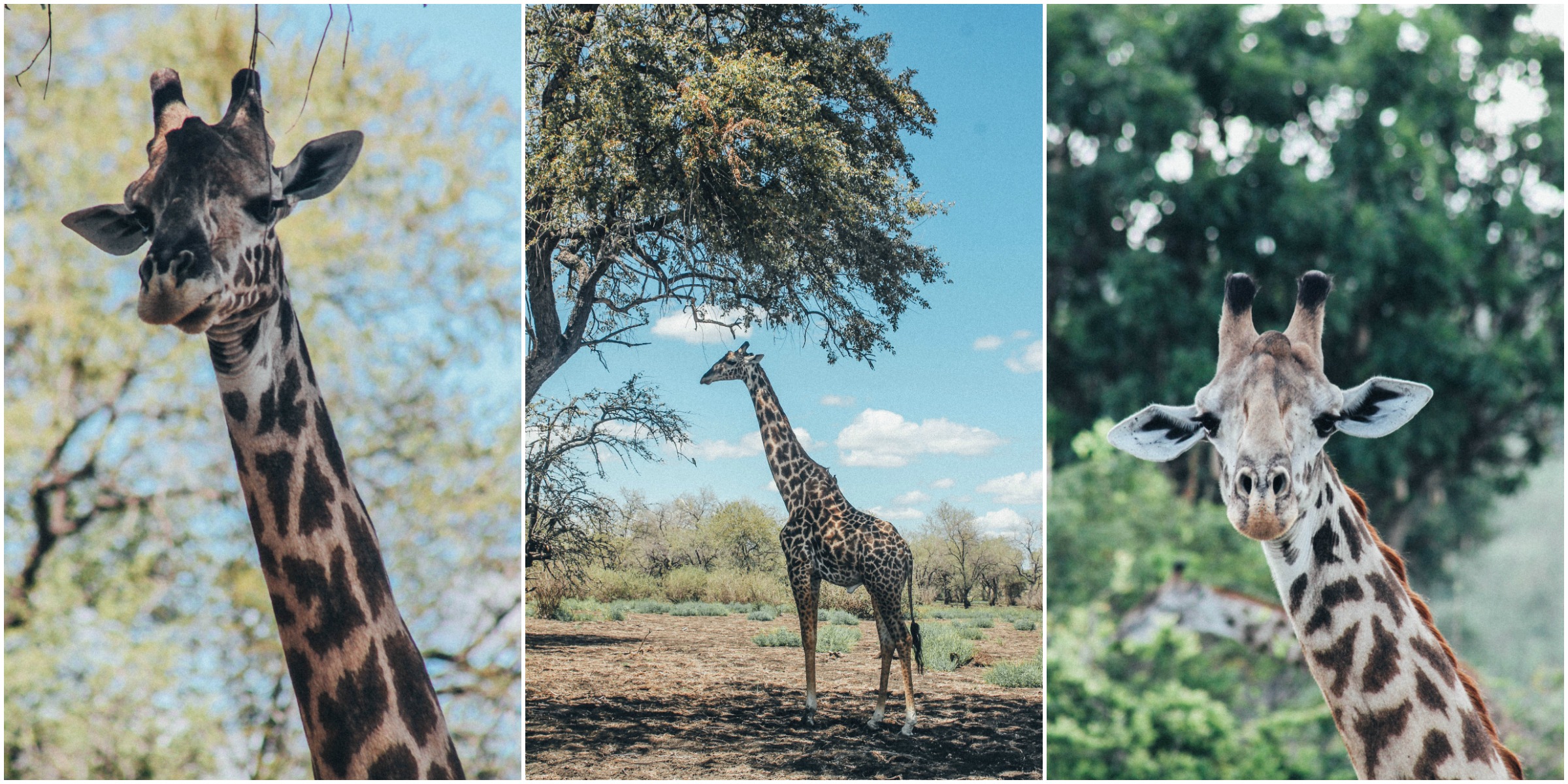 Point 6- Prepare for bush-planes
Point 6- Prepare for bush-planes
I am not a fan of flying, so the thought of hopping from one camp to the next by gnat-like bush plane was not appealing. From Mikumi, an eight-seater deposited us in the Selous, and once I’d gotten over my nerves I did enjoy watching the endless expanse of savannah below me; tiny elephants like pacmen ploughing through the grassland, mountains carpeted with thick green jungle. It put into perspective the vastness of the country, the wilderness. From the Selous we took an even smaller plane, a four-seater, to Zanzibar. I’ll admit I spent most of the flight clutching Maya’s hand for dear life (especially since we had to fly through a storm), but the views of the turquoise Indian Ocean, haloed with rings of coral made it worth it.
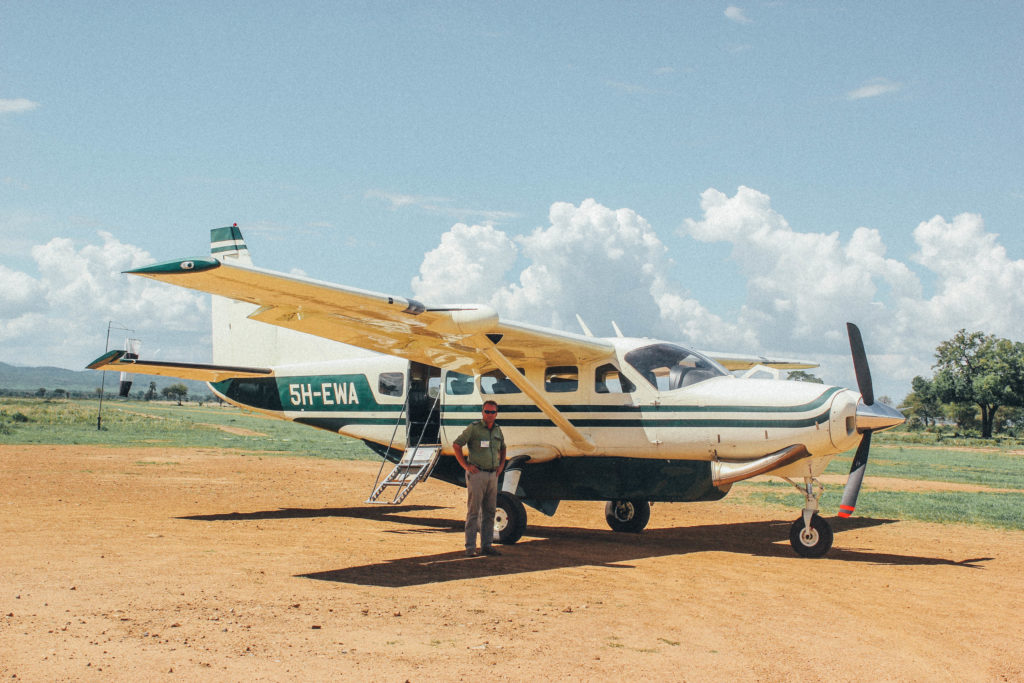 Point 7- You will need a vacation
Point 7- You will need a vacation
After a few days of bumping along dirt tracks, getting sunburned in open vehicles and spending the whole day with cramped legs and backs you will be pretty shattered, no matter how many amazing encounters you had. Therefore, it is never a bad idea to take yourself off to a nice beach to end your safari. After Tanzania, we headed to Zanzibar for a week of relaxation. We stayed in Sandies Neptune Pwani, a resort in the north of the island. It was a good base for a lazy week which we needed; lots of swimming in the pool and bath-water warm sea, strawberry milkshakes and a (failed) attempt at learning to sail. We also had a mini aquatic safari when we spent a morning dolphin watching in Kizimkazi in the south of the island. I was desperate to swim with them but seeing the boats chase the dolphins and hundreds of tourists jumping into the sea in a desperate attempt to glimpse them underwater changed my mind- I was happy to watch those majestic creatures from the boat. Thats not to say I wasn’t disappointed, but I didn’t want to be part of irresponsible tourism. Which brings me to the next point.
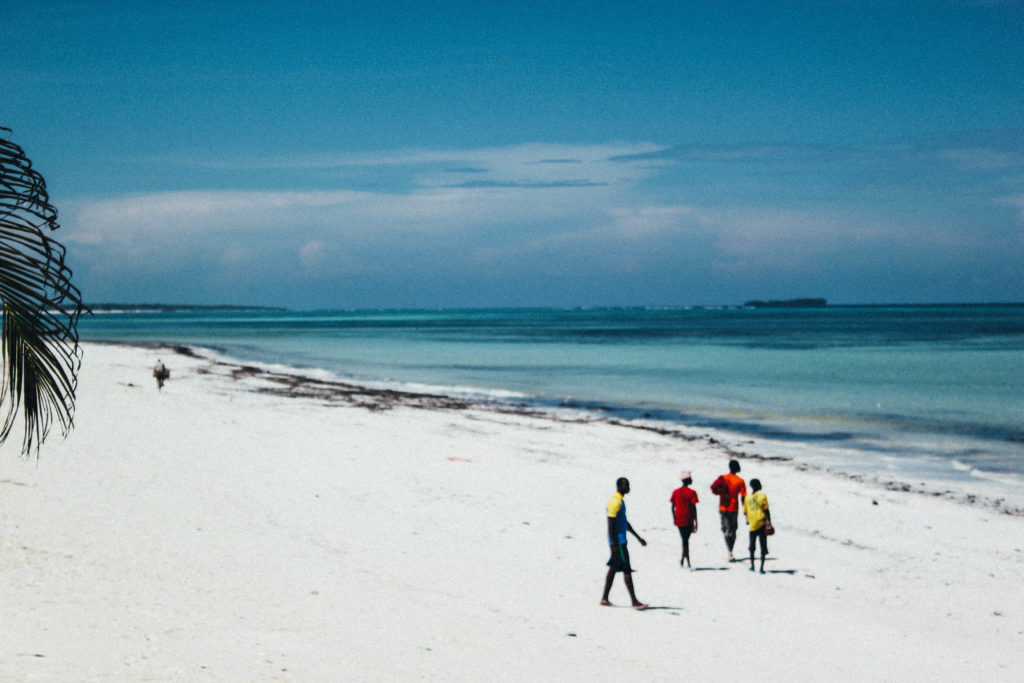
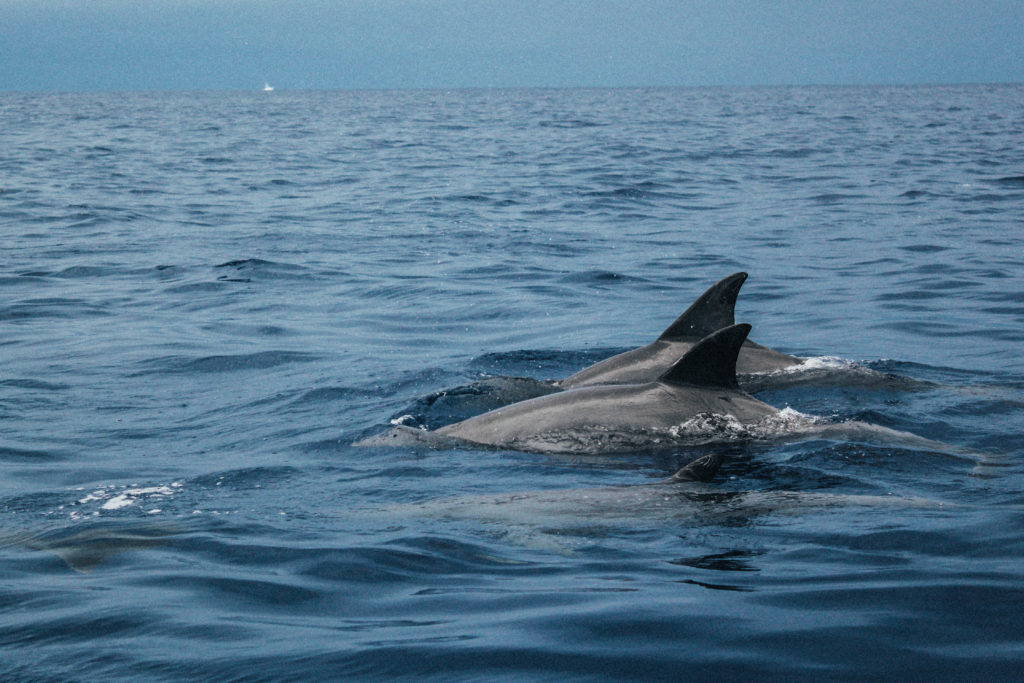
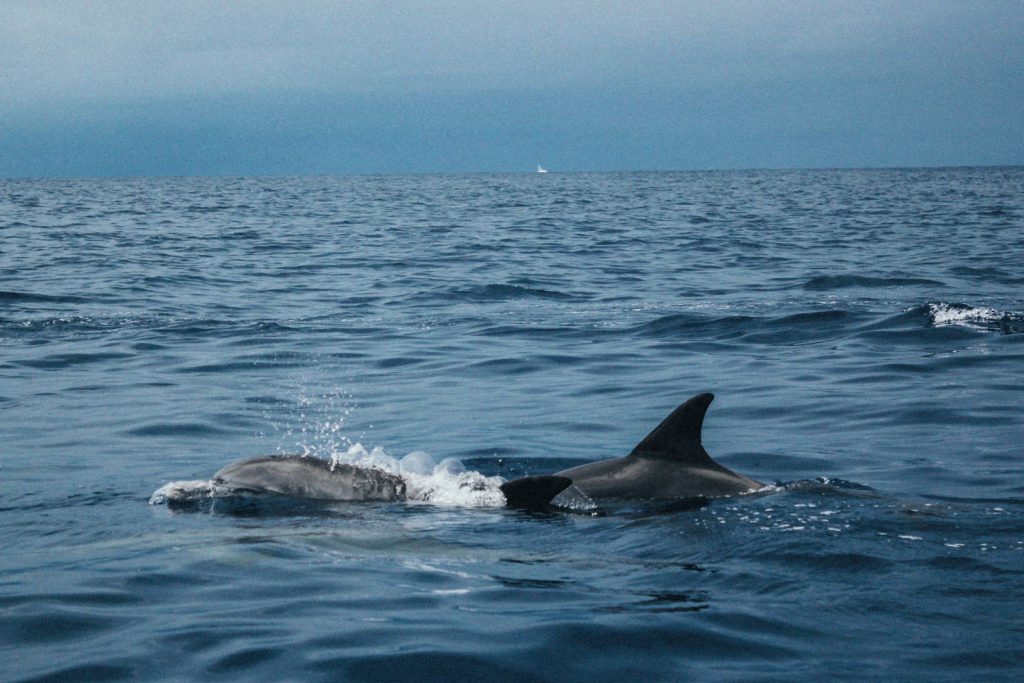 Point 8- Be responsible
Point 8- Be responsible
I try to be a responsible tourist where possible, especially when travelling to developing countries. I don’t want to sound preachy but I hate what people will do just to get a better profile picture or selfie for instagram. In the Selous, jeeps would crowd around lions, each full of tourists jostling for a better photo. In Zanzibar, there were the boats chasing the dolphins. Its not always avoidable of course but make your choices and have your principles.
In Zimbabwe, Chilo was great because there was almost no one else in the park, and all the staff and guides had great respect for the wildlife, as well as involving the local communities in projects.
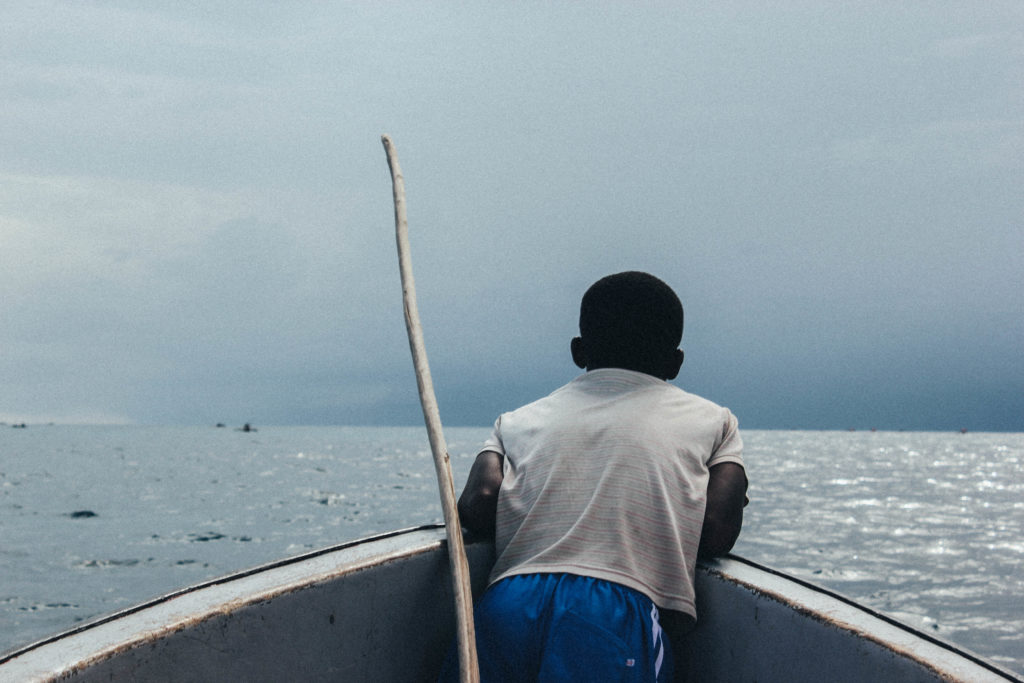
Final point- You won’t forget it
Whatever happens, you won’t forget an African safari, and if you are anything like us, you’ll be back for more.
All photos Maya’s or my own

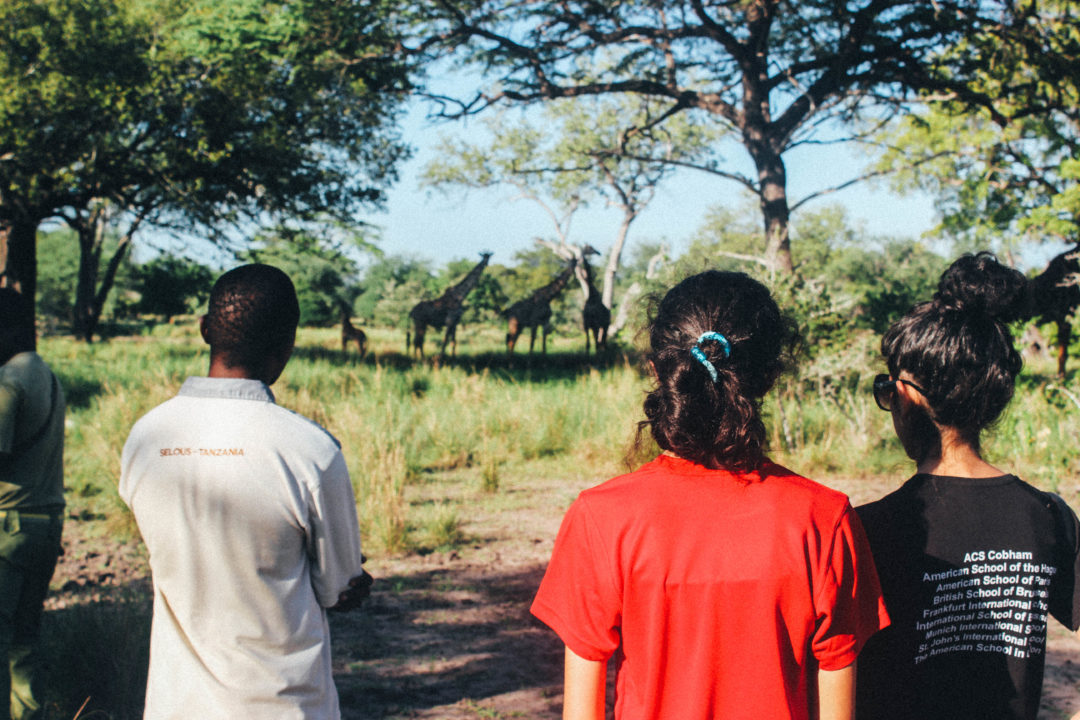
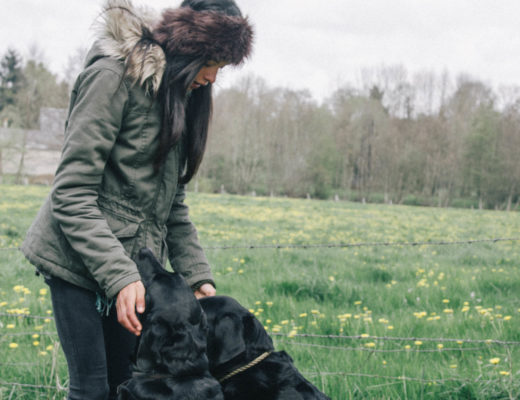

Absolutely loved it. Brought it all back and so beautifully too. Great writing and great photos.
yay thank you 🙂
Thoroughly enjoyed reading about these unforgettable adventures. Brings back nice memories the hardship already forgotten! Amazing photos.
those are some memories for sure! i’ll never forget getting stuck 😛
Wow! Helpful information about African Safari survival , I took me to those places as I was reading. Exciting and knowledgable .
thank you, i’m glad you enjoyed it 🙂
haha i loved this, made me laugh. some good points to remember. always learning through experience…
yes thats us!